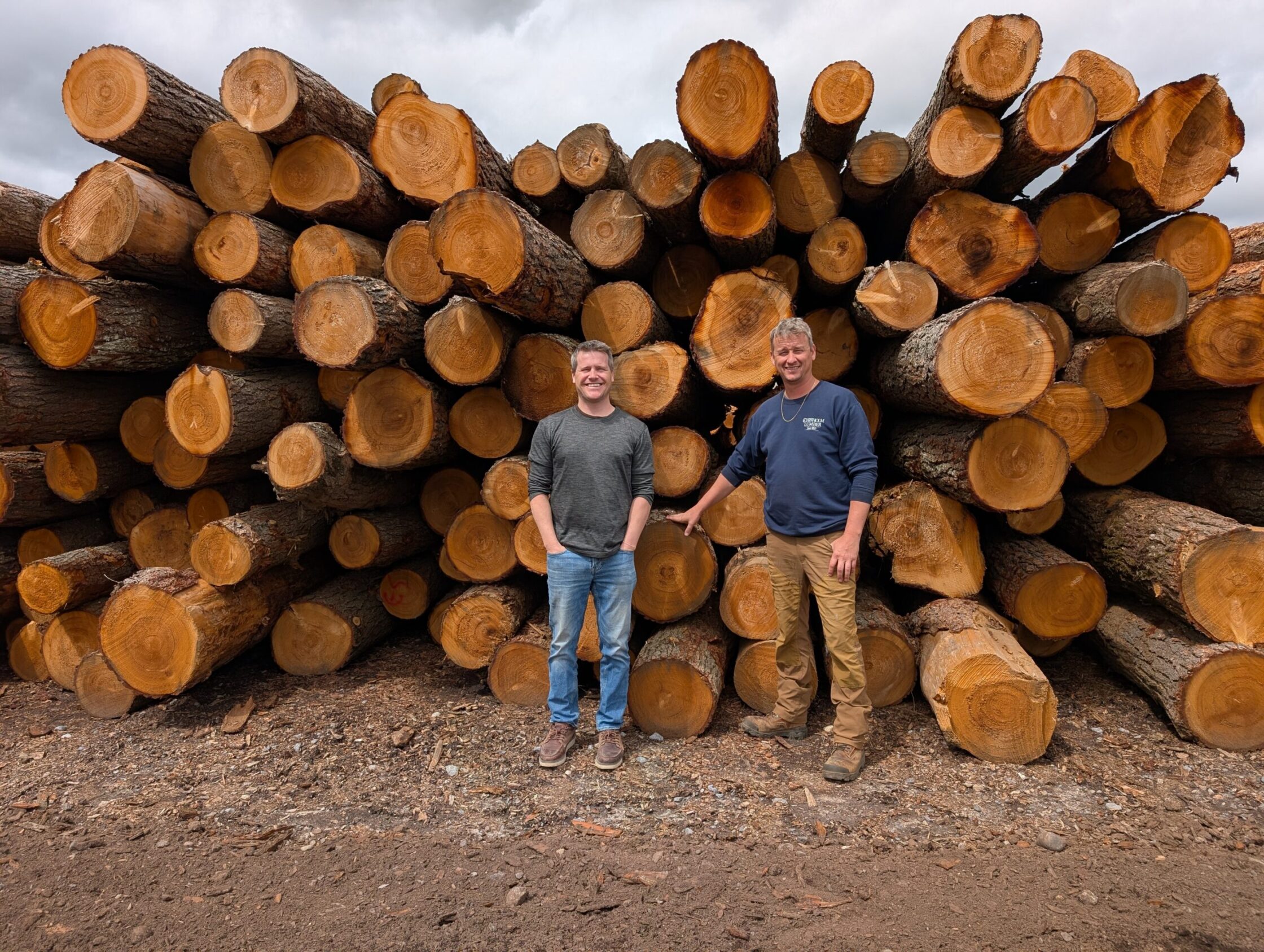Based in the village of Roslin, about two and a half hours east of Toronto, Chisholm Lumber may well be among the oldest operating family businesses in Canada. It was founded in 1857 by William Fraser Chisholm when he bought a feed mill/grist mill from the Shipman family on the banks of the Moira River in Roslin. Today—168 years later—it is owned and operated by the sixth generation of the same family.
Doug Chisholm has lived through three of those phases of ownership. With his two cousins, Mr. Chisholm was the fifth-generation owner-operator of the business until his retirement 10 years ago. During his tenure, he has seen both transformation and challenges—from recessions to labour shortages and family setbacks.
Today, he is reflective and frank about what it takes to maintain the legacy of a successful Canadian business for nearly 170 years. In this conversation with Canadian Family Offices, he shares why being open to new ideas is vital, what a precarious economic environment means to business, and how you “can never be, but must always be” prepared for the inevitable surprises along the way.
How did Chisholm Lumber come to be established?
In the mid-1800s, it was common for people to move to take up new economic opportunities. The Chisholm family were United Empire Loyalists who eventually moved to the millsite in Roslin in 1857. I believe the initial operation was a water-powered grist mill/feed mill, but the early generations were soon involved in the wood business, again with a water-powered sawmill at the Roslin millsite. I grew up in a house on the millsite. In the 1950s, there was still waterpower in both the grist and sawmill.
How has the company evolved since those early days?
From its initial grist mill operation, the company has become a fully integrated forest products entity. The business today is really a tribute to the efforts of the sixth generation in building on the business foundations of the third, fourth and fifth generations. Each generation added to and improved on the efforts of the previous one. Our fifth-generation tenure was from the early ’80s until about 2010. I personally stayed on until about 2015 in an advisory role as the sixth generation established their tenure. My fifth-generation partners, two cousins, were capable and hardworking and had grown up in the business.
What are some of the challenges you’ve faced as a family business?
There are lots of challenges in the lumber industry. The first is timber supply. With our location, this has always been an issue. The harvesting of timber and its sustainability has improved dramatically in our area in the last few years. Much of the improvement can be traced to the introduction of SFLs (Sustainable Forest Licences) in Southern Ontario.
The second is lumber production strategy. In the 1980s, we operated two sawmills and pursued a quantity and volume strategy. In the 1990s, it became a quality strategy, where it remains today. Our main lumber production species are white pine and grade hardwoods—white pine for the Canadian market through our retail outlet, and grade hardwoods for the Canadian and export markets through our wholesale division.
The third challenge is training and acquiring skilled labour. In our tenure, we were blessed with a reliable and stable workforce. Many came from the surrounding farm communities and often had small farms themselves, so they understood equipment and business. For our part, we supplied reliable and consistent employment in an industry known for its rollercoaster swings.
There was never any pressure for any of [our children] to work in the business. Our approach was to prepare and expose them to what you do and have done, but ‘Don’t work for Dad right out the chute!’
Doug Chisholm
The fourth big challenge is the economy. Our fifth-generation tenure began with 22 per cent interest rates, and we suffered through several recessions. We survived because of our diversification and integration efforts over the years. If we had only the sawmill business, we would not have made it. We started a wholesale division, acquired dry kilns to further integrate our wholesale business, and started a construction/renovation division. The sixth generation has taken these activities to the next level.
Another challenge is managing change. I think we did it very well. We are always looking for new products or opportunities. And if it doesn’t work, we try something else. Put simply, our philosophy has been ‘If you’re going to do it like Dad did it, you won’t be around long.’
The business environment today is volatile, with tariffs and trade disputes—including over softwood lumber—driving uncertainty. How does the company manage through unexpected events?
Although we are in the lumber business, our product mix somewhat isolates us from current tariff issues. We don’t produce much construction-grade lumber, which is the product that is subject to tariffs and duties when exported to the U.S. That has been a contentious issue for as long as I can remember. We only export hardwoods, and since Canada is a net importer of high-grade hardwood lumber, mostly from the U.S., it shouldn’t be a target of the current U.S. administration. (Of course, never say never!)
How did your family prepare you for succession as the next generation in the family business?
I grew up in a house about 50 yards from the main sawmill, so the business was ever-present. We learned our work ethic young. My brother and I worked in the planing mill at a very young age. We all went to a one-room school in Roslin—35 kids and one teacher with eight grades. You learned to pay attention and became aware of what was coming at the next grade levels. Older kids often helped younger ones with their work. I consider those early experiences as advantages that helped me develop strong work habits.
There wasn’t much discussion about working in the family business, although I worked there in the summers through high school and university. After high school, undergrad in the U.S. on a hockey scholarship, and then an MBA, I worked for an engineering consulting firm and for a large pulp-and-paper conglomerate. It was great experience for eventually working in the family business, although I had no inkling at the time that would eventually happen. It gave me many opportunities to see how to manage and not manage various businesses. I worked in Southeast Asia for a couple of years (bringing my family along) and had a number of short-term overseas assignments. It sounds glamorous, but it was way too much time on airplanes.
In the early 1980s, there was a business crisis at Chisholm Lumber. I was asked to help out and it made sense to get involved with two of my cousins who were already working in the business. I was in my early 30s, well established in my career, with an in-demand skill set, and my wife and I decided to give it five years and see how it would work out.
We never left! The lesson was that it’s hard to plan for these situations, but be prepared when the opportunity arises.
How have you prepared the younger generation for their tenure as the sixth generation?
As a business student and then a student of business throughout my working days, my wife and I thought a lot about exposing our children to career opportunities, including family business opportunities. We emphasized education first and often talked about business in general at the dinner table. I always talked about how important it was for me to work for someone else before getting involved in the family business.
Our children are all well-educated and thriving in their chosen careers. Our youngest son has chosen the family business. After university, he worked overseas for a couple of years, then was a sales rep for a hardwood flooring company in Canada before joining the family business.
There was never any pressure for any of them to work in the business. Our approach was to prepare and expose them to what you do and have done, but ‘Don’t work for Dad right out the chute!’
I’ve read extensively about family businesses over the years. It’s a fascinating subject. A person I talk to from time to time is a Queen’s University business professor who teaches strategy and researches succession in family businesses. I hope to include some of my personal views on this in an upcoming book. I recall reading about the Smuckers family and their policy about family members working in the business: First, you have to get a graduate degree, then you had to have worked for someone else, and thirdly, you had to have lived and worked overseas. Then you can work for Smuckers.
How do you give back as a family?
As the main business in a small community, we were and are inundated with requests for donations. We help as much as we can. But we leave most of it to the individual. We support local hospitals, hospices, churches and food banks. During our 150th anniversary celebrations in 2007, the company supported a Habitat for Humanity build. We are particularly proud of our employee relationships. In the last 10 years since retirement, I am amazed at how many of our retirees have 40-plus years of service with the company.
What’s on the horizon for you and Chisholm Lumber?
Chisholm Lumber is seven years away from its 175th anniversary. I would expect the company will again do some community-based project for this milestone.
I’ve often thought that the Chisholm Lumber story would make a great book. My cousin spent much of her adult life researching the family genealogy. I encouraged her to put ‘pen to paper,’ but she always had more research to do and unfortunately passed away without being able to put it all together. This reminds me of the Shopify founder [Tobias Lütke], who lives by the philosophy that ‘Done is better than perfect.’
If I do get around to a book, it will be more on the business side, not a biography for sure, but some memoirs about growing up in Roslin and some business lessons learned along the journey. I have been privy to three successions from generation to generation in our family business. There have been some good lessons there, the main one being that you can plan as much as you want, but be prepared to expect the unexpected. In our transfer from fifth to sixth, we planned extensively to get it right, but a business setback, illnesses and an unexpected ‘third base’ problem intervened. It was a tough slug for a few years, but it eventually worked out.
The forest product industry is one that is pretty easy to milk for short-term profitability at the expense of the long-term viability of the company. I like to think that each generation ‘rents’ the company facilities. They seek to improve facilities and procedures. They know that a family member is moving in next.
The Canadian Family Offices newsletter comes out on Sundays and Wednesdays. If you are interested in stories about Canadian enterprising families, family offices and the professionals who work with them, but like your content aggregated, you can sign up for our free newsletter here.
Please visit here to see information about our standards of journalistic excellence.




